In Nigeria, shrimp farming is a thriving business. This is because Nigeria has a lot of natural resources, and many places in the world can produce shrimp in large quantities. Moreover, shrimp is the most profitable seafood company in the world, with an annual turnover of more than 18 billion US dollars. Therefore, it is a good route to start shrimp farming in Nigeria. Nigeria currently produces more than 12,000 metric tons of shrimp per year.
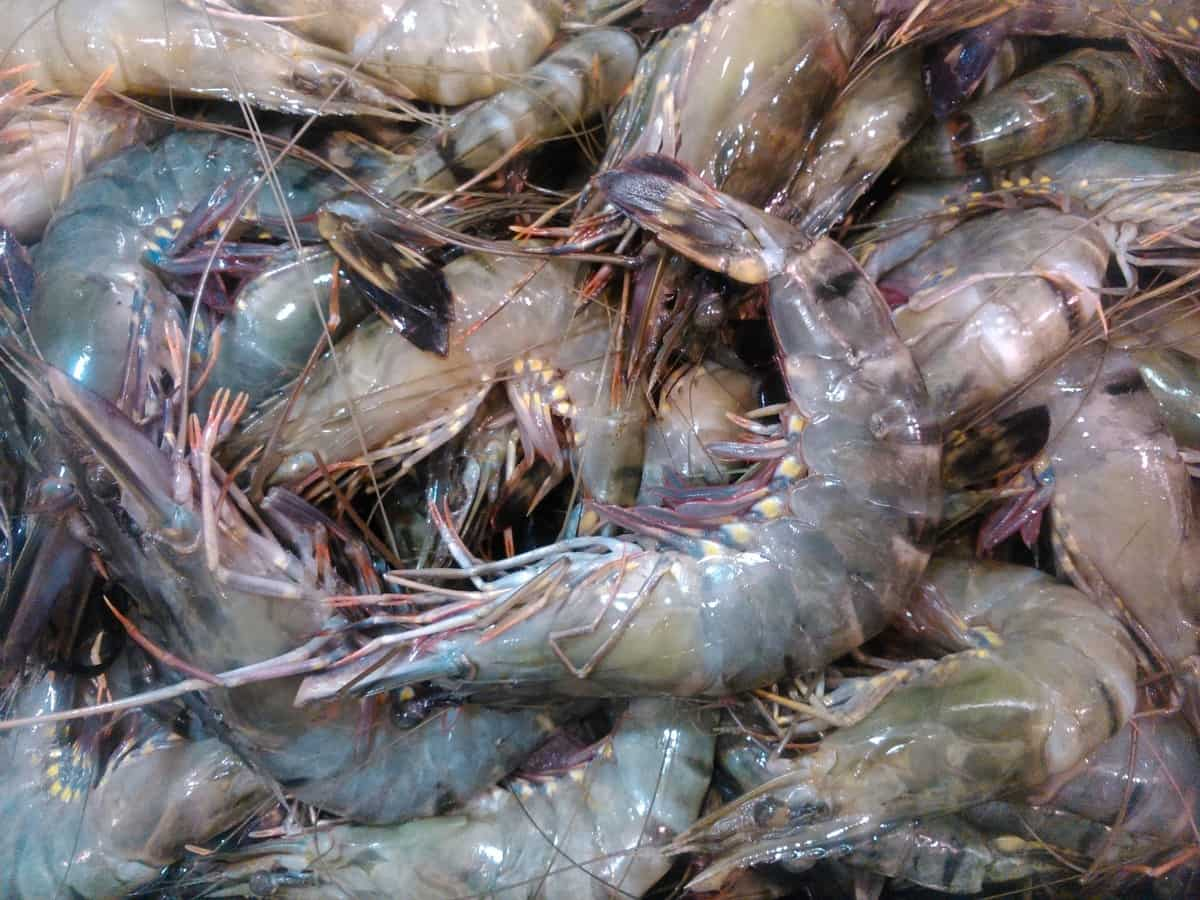
How to start shrimp farming in Nigeria
What is shrimp farming?
Nigeria is one of the world’s largest shrimp producers. The country’s warm climate and extensive coastline provide ideal conditions for shrimp farming. As a result, shrimp farming in Nigeria is a lucrative business. Shrimp farming is a viable option for Nigeria, as it has the potential to provide employment and income for many people.
In addition, the country has the necessary resources to support this industry, including a large coastline and a suitable climate. Therefore, shrimp farming can become a successful enterprise in Nigeria with proper planning and management.
Is shrimp farming profitable in Nigeria?
Yes, shrimp farming can be profitable in Nigeria. This is because the country has a large coastline with many estuaries and lagoon systems ideal for shrimp farming. In addition, the climate is warm and humid, which is also conducive to shrimp farming. There are many factors for determining whether or not shrimp farming is profitable in Nigeria.
These include the cost of inputs (such as feed, feedstock, and Fingerlings), the price of output (shrimp), and the productivity of the farm. Generally speaking, shrimp farming is more labor-intensive than other types of aquaculture. This means that labor cost is often a significant factor in determining profitability. In Nigeria, however, cheap labor is abundant, which makes shrimp farming more viable.
In case you missed it: How to Start Shrimp/Prawn Farming from Scratch: Check How this Guide Helps Beginners
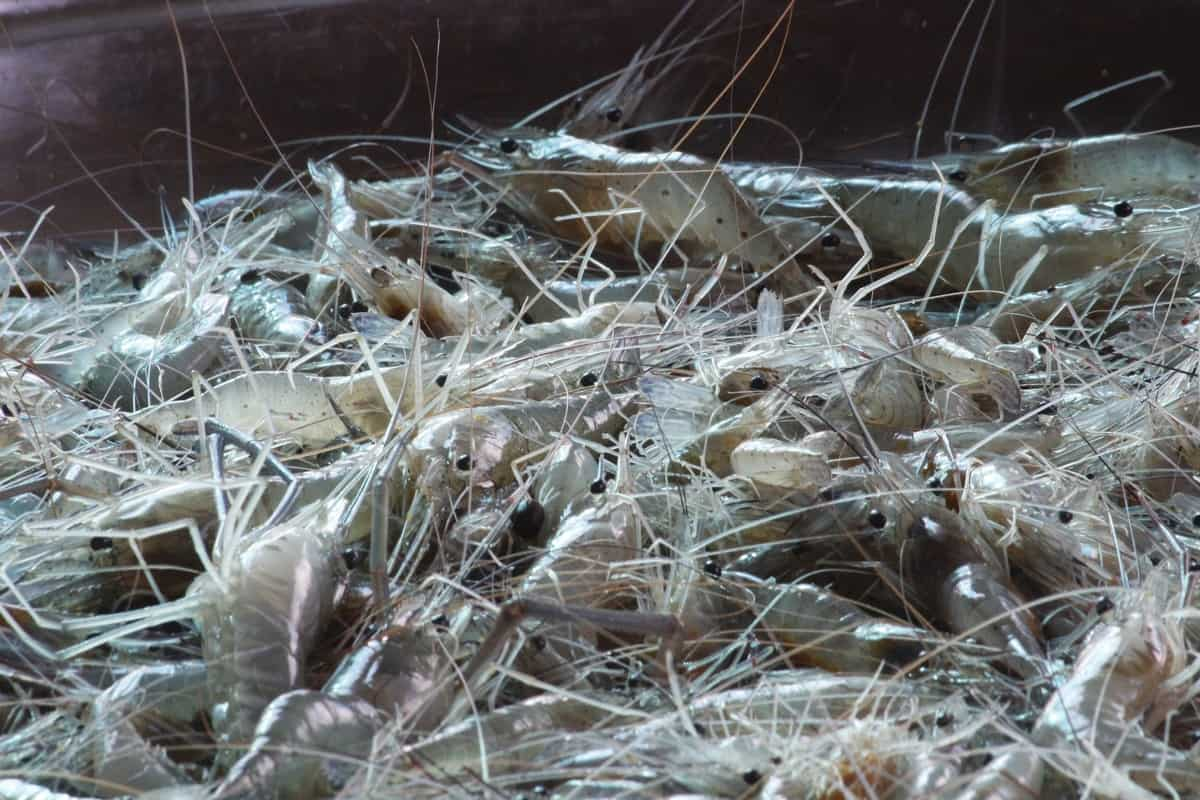
Where is shrimp Found in Nigeria?
Nigeria is blessed with an abundant shrimp supply due to many coastal and mangrove areas within the Niger Delta region. Some of Nigeria’s best shrimp farming places and locations include Lagos, Ogun, Delta, Rivers, and Edo states. These states offer the perfect combination of climate, water availability, and infrastructure to support a successful shrimp farming business.
Shrimp farming equipment in Nigeria
If you want to get into shrimp farming in Nigeria, you will need some basic equipment. This includes a pond or tank, an aeration system, a filtration system, and heaters. You will also need some netting to keep the shrimp and predators out.
How do you start a shrimp farm in Nigeria?
- Find a suitable location: Shrimp farms need to be located near coastal waters where the water temperature is warm enough for shrimp to survive. The site should also have good water quality and access to fresh water.
- Build ponds: Once you’ve found a suitable location, you’ll need to construct ponds for your shrimp farm. The size and depth of the pond will depend on the type of shrimp you’re raising and the production system you’re using.
- Stock your ponds: You’ll need to purchase juvenile shrimp from a hatchery and stock them in your ponds. The stocking density will vary depending on the shrimp species and the production system used.
- Feed your shrimp: Shrimp are omnivorous and eat almost anything, but they prefer live food such as algae, small fish, crustaceans, and worms.
Time takes to raise shrimp in Nigeria
It takes approximately two to three months to raise a shrimp in Nigeria.
Are shrimps profitable in Nigeria?
Yes, shrimps are profitable in Nigeria. The country’s large coastline provides an ideal environment for shrimp farming. Shrimp farming is a relatively new industry in Nigeria but has already created jobs and generated income for many small-scale farmers. Shrimp farming is a lucrative business because the demand for shrimp is high, and the price of shrimp is relatively stable. In addition, shrimp farming does not require a lot of land or labor, making it a more efficient form of agriculture than other types of livestock or crop production.
In case you missed it: 16 Key Rules for Effective Shrimp/Prawn Farm Management: From Planning to Reduce Production Cost
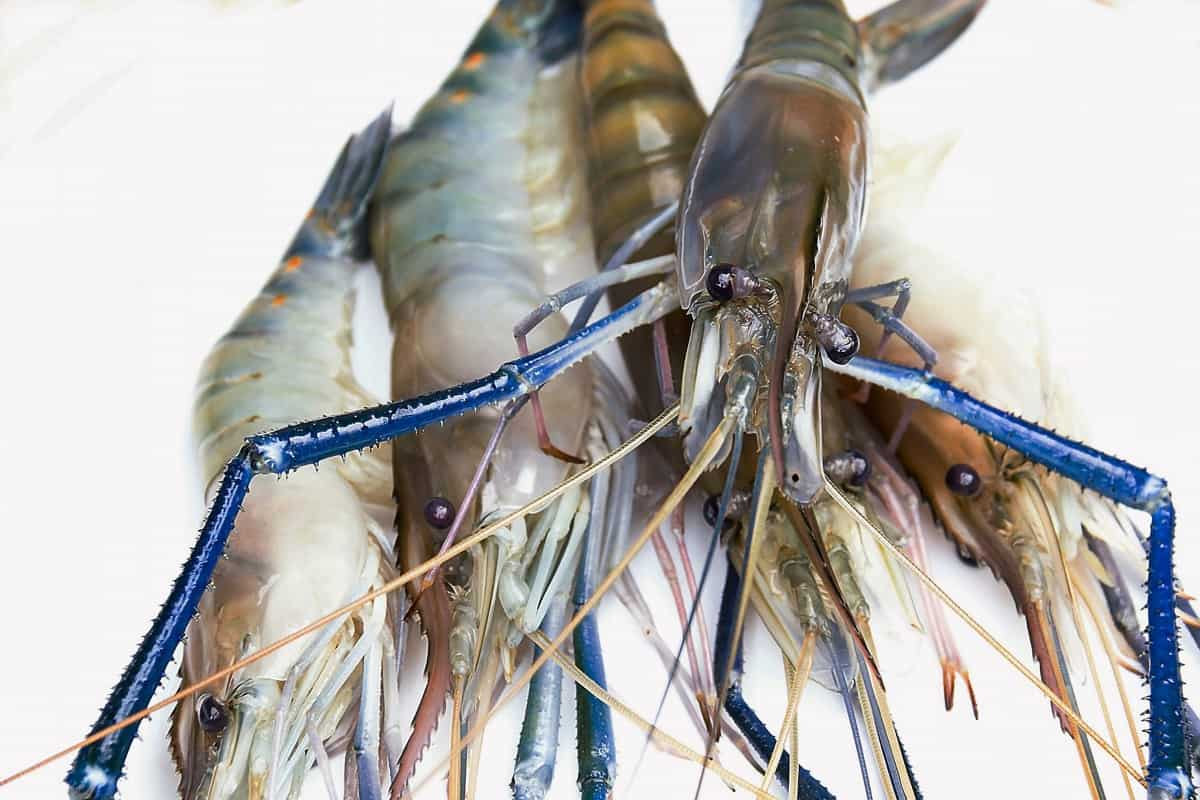
Is indoor shrimp farming profitable in Nigeria?
Yes, indoor shrimp farming can be profitable in Nigeria. The main reasons are the high demand for shrimp in Nigeria and the relatively low cost of starting and maintaining an indoor shrimp farm.
How big of a tank does a shrimp need in Nigeria?
It is recommended that farmers in Nigeria use tanks that are at least 16 square meters in size for shrimp farming. This allows for a high density of shrimp to be farmed, resulting in higher yields.
Freshwater shrimp farming in Nigeria
Freshwater shrimp farming in Nigeria is a growing industry with great potential. The climate and geography of Nigeria are well suited for shrimp farming, and the country has a long coastline with many mangrove forests, which provide ideal habitat for shrimp. Nigeria’s shrimp farms are typically small operations, often family-run businesses.
The average farm size is about 2 hectares, and most farmers use traditional pond construction and management methods. In recent years, however, some larger companies have begun to operate farms in Nigeria, using more intensive production methods. With favorable conditions and growing demand from local and international markets, Nigeria’s shrimp farming industry is poised for further growth in the coming years.
Steps to start a shrimp farming business in Nigeria
- Research the industry: Shrimp farming is a complex business, so you must understand all aspects before getting started. This includes learning about the different species of shrimp, their feeding habits, and the life cycle of shrimp.
- Get the necessary permits and licenses: You will want to obtain a license from the Nigerian government to operate a shrimp farm.
- Find a suitable location: Your shrimp farm’s location will need access to fresh water and be close to the ocean. It should also have good drainage and be protected from strong winds. In addition, you will need access to clean water and a suitable climate for shrimp farming.
- Build or buy the necessary infrastructure: This includes ponds, tanks, aerators, pumps, and other equipment needed for shrimp farming.
- 5. Stock your ponds with shrimp larvae or post-larvae (PLs): You can purchase these from a hatchery or grow them using brine shrimp eggs.
- Feed the shrimp regularly and monitor the water quality closely: Shrimp require a high-protein diet and must be fed several times daily.
- Create a shrimp farm business plan: This will help you map out the details of your business and find potential investors.
- Monitor your shrimp farm: Regularly check the water quality and temperature, and feed your shrimp appropriately.
- Harvest your shrimp: Shrimp are typically ready for harvest after 4-6 months.
- Process and package your shrimp: This can be done on-site or at a processing facility.
- Market and sell your shrimp: There are various options, including online, wholesale, and retail outlets.
In case you missed it: Shrimp Farming in USA: How to Start, A Step-by-Step Guide for Beginners
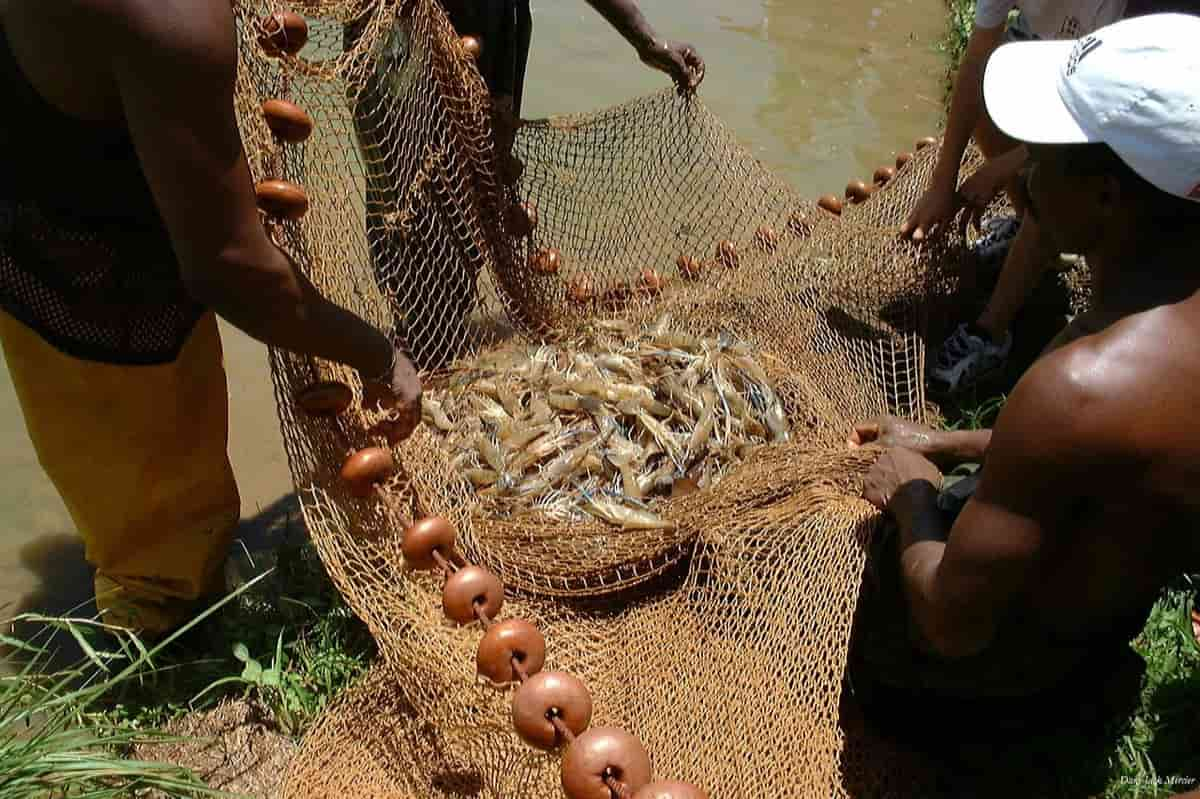
Different shrimp farming techniques in Nigeria
- Marine Shrimp Culture – In this method, shrimp raising in saltwater ponds. Large-scale commercial operations typically use this method. Marine shrimp farms can be found along the coastlines of Nigeria.
- Freshwater Shrimp Farming – In this method, shrimp raising in freshwater ponds. Small-scale operations typically use this method. Freshwater shrimp farms can be found inland, away from the coastlines of Nigeria.
- Indoor Shrimp Farming – Shrimp are raised in tanks or enclosed systems in this method. This method can be used by both small- and large-scale operations. Indoor shrimp farms can be found in coastal and inland areas of Nigeria
Site selection for shrimp farming in Nigeria
The first step in shrimp farming is to select a suitable site. The site must have shallow water with a sandy bottom and little vegetation. It should also be close to a source of fresh, clean water. In Nigeria, there are many potential sites for shrimp farming. One such site is the mangrove forests along the Niger Delta.
These forests provide an ideal habitat for shrimp, as they are rich in plankton and other microorganisms they feed on. The next step is to prepare the ponds for shrimp farming. This involves clearing the pond of debris, leveling the bottom, and adding sand or mud to create a sloped pond edge.
Types of Shrimp species in Nigeria
- White Leg Shrimps: WhiteLeg Shrimps are Nigeria’s most popular type of shrimp farming. They are fast-growing and have a high survival rate.
- Cherry Shrimps: Cherry Shrimps are also popular but grow more slowly and have a lower survival rate.
- Pandalus Borealis: Pandalus Borealis is the least popular type of shrimp farmed in Nigeria due to its slow growth rate and low survival rate.
Main methods of shrimp farming in Nigeria
- Intensive shrimp farming is the more common method in Nigeria. It involves raising shrimp in ponds or tanks with strict water quality and temperature control. This method requires more inputs and labor but can result in higher yields.
- Extensive shrimp farming is less common in Nigeria but is practiced in some coastal areas. It involves raising shrimp in ponds or tanks with less water quality and temperature control. This method requires fewer inputs and labor but can result in lower yields.
Caring & other management tips for shrimp farming in Nigeria
- Maintain cleanliness: Shrimp are sensitive to water quality and will not do well in unclean or polluted water. Be sure to regularly test the water quality and make changes as necessary to keep the shrimp healthy.
- Keep an eye on temperature: Shrimp prefer cooler waters and will not do well in too warm water. Be sure to monitor the water temperature and take steps to keep it cool if necessary.
- Monitor for predators: Several predators can threaten shrimp, including birds, fish, and even crabs. Be sure to take measures to protect your shrimp from these predators.
- Provide adequate food: Shrimp need a high-quality diet to thrive. Make sure to provide plenty of food rich in nutrients.
Water quality for shrimp farming in Nigeria
It is an important factor in shrimp farming. Shrimp are very sensitive to changes in water quality and can be easily killed by poor water quality. The main water quality parameters that must be monitored in shrimp farms are temperature, pH, dissolved oxygen, ammonia, nitrites, and salinity.
Dissolved oxygen is the most important parameter, as shrimp need high levels of dissolved oxygen in the water to breathe. Ammonia and nitrites are also very toxic to shrimp and must be kept at very low levels. Salinity is also an important parameter, as shrimp are very sensitive to changes in salinity levels.
In case you missed it: Making 60 Lakh Per Year from Prawn/Shrimp Farming – A Success Story of an Aqua Farmer
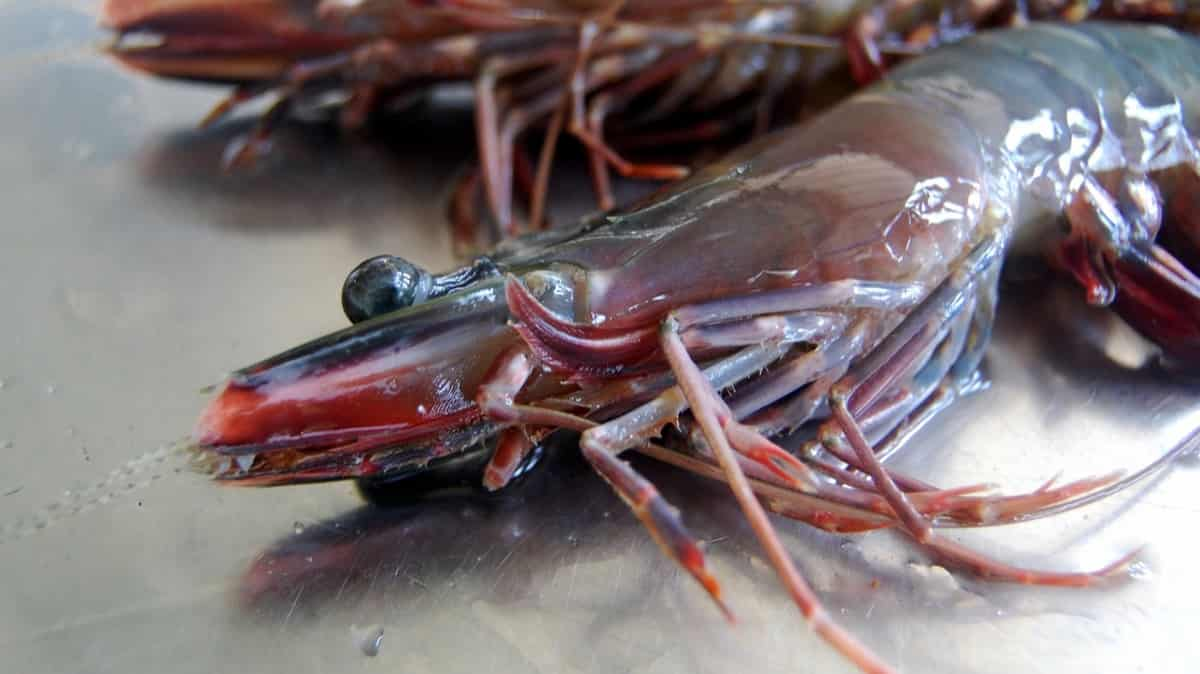
Feed your shrimp in Nigeria
Shrimp feed is typically made up of pellets that contain a mix of fishmeal, soybean meal, corn gluten meal, and other ingredients. The diet is supplemented with vitamins and minerals to ensure optimal shrimp growth. Feeding is done two to three times per day, and feeding rates vary depending on the shrimp’s growth stage.
Challenges of shrimp farming in Nigeria
There are many challenges associated with shrimp farming, including environmental degradation, water pollution, and social issues such as forced evictions and child labor. Shrimp farming can lead to severe environmental degradation. The intensive nature of shrimp production often leads to the overuse of chemicals and antibiotics, which can pollute waterways and harm local ecosystems. In addition, shrimp farms often destroy mangrove forests to make way for ponds, further contributing to habitat loss.
Water pollution is another major concern associated with shrimp farming. Wastewater from shrimp ponds can contain high nitrogen and phosphorus levels, leading to algae blooms and oxygen depletion in receiving waters. This can create serious problems for local fisheries and those who depend on them for their livelihoods. Finally, there are also serious social issues associated with shrimp farming in Nigeria.
How do you make shrimp grow faster in Nigeria?
Several things can be done to make shrimp grow faster in Nigeria. One is to provide them with a high-quality diet. This means giving them a balanced diet with the essential nutrients they need for growth. Another way to make shrimp grow faster is to provide them with a clean and spacious environment.
This means keeping their tanks clean and debris-free and providing them with plenty of room. Finally, keeping the water temperature at a consistent level is important. This will ensure that the shrimp are comfortable and able to grow at their fastest rate.
Marketing for shrimp farming business in Nigeria
- Marketing your shrimp farming business in Nigeria can be challenging, but there are some key things you can do to get started. First, it’s important to understand the local market for shrimp.
- Once you understand the local market, you can begin to develop a marketing strategy. One option is to work with a marketing firm specializing in agricultural businesses. They can help you create a brand and develop a marketing plan to reach your target audience.
- Another option is to sell your shrimp directly to restaurants and grocery stores. This can be a great method to start, but you’ll need to ensure you’re pricing your shrimp competitively. You may also consider setting up your website or online store so people can purchase shrimp from you directly.
- No matter your marketing strategy, it’s important to be patient and consistent. Marketing your shrimp farming business takes time and effort, but if you stick with it, you’ll eventually see results.
Shrimp farming problems in Nigeria
The important factor to consider is a disease. Shrimp are particularly susceptible to diseases, which can quickly decimate a farm’s stock and lead to financial losses. In Nigeria, many diseases affect shrimp farms, including the yellow head virus (YHV) and white spot syndrome virus (WSSV). Although there is no guaranteed method to prevent these diseases from occurring, good management practices can help minimize their impact.
Assuming all factors are favorable, shrimp farming can be lucrative in Nigeria. With proper management and careful consideration of costs and risks, farmers can achieve profitability and enjoy success in this industry. One of the biggest problems is water pollution. Shrimp farms discharge large amounts of wastewater into the environment, which can pollute waterways and harm marine life. Another problem is the use of harmful chemicals and antibiotics in shrimp farming.
These chemicals can leach into the environment and contaminate water supplies. They can also cause health problems for people who eat contaminated seafood. Finally, shrimp farms often destroy mangrove forests, which are important ecosystems that provide habitat for many fish species and other wildlife. Mangrove deforestation can seriously affect local ecosystems and the people who mainly depend on them for their livelihoods.
In case you missed it: Organic Shrimp Farming – Prawn Production Practices
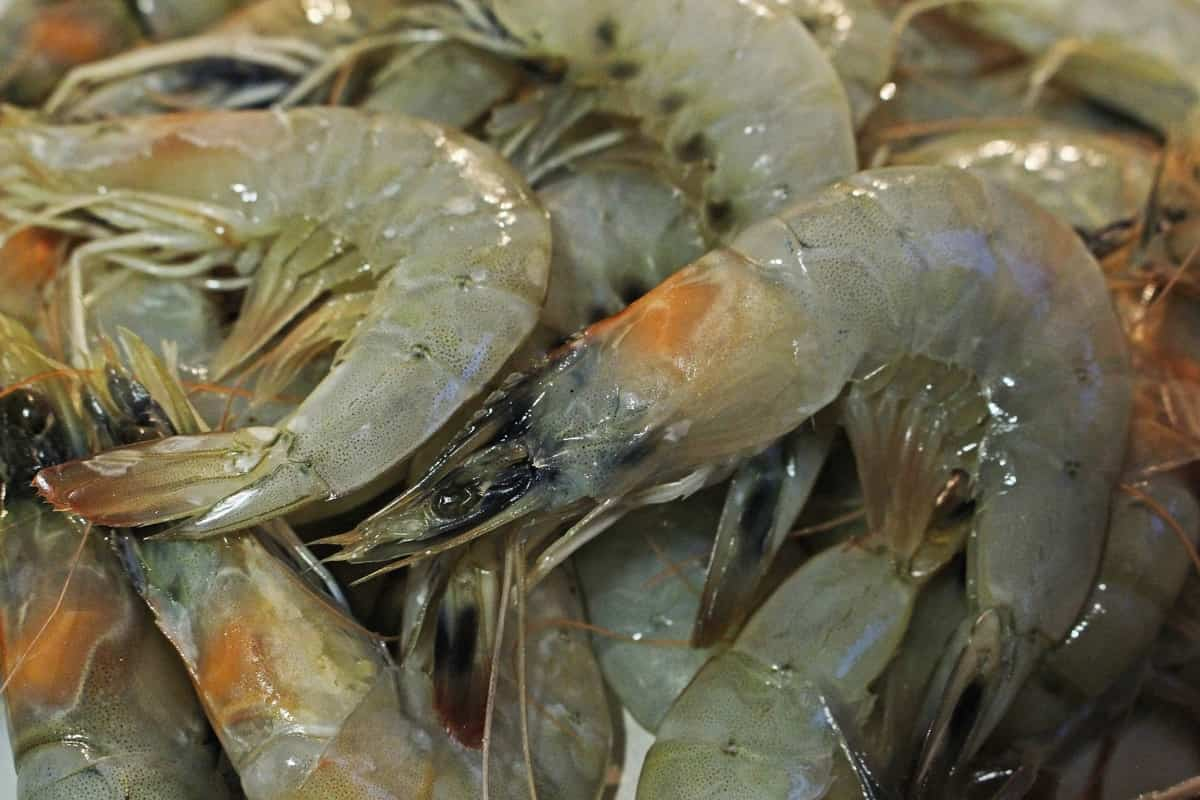
Shrimp farming set up cost in Nigeria
The average cost of setting up a shrimp farm in Nigeria is between $13,500 and $16,000. This includes the cost of leasing land, constructing ponds, and buying fingerlings. In addition, the cost of labor and other inputs, such as feed and electricity, can vary depending on the farm’s location. Nevertheless, profit margins for shrimp farms can be quite high. This is because the demand for shrimp is very high. Therefore, well-run shrimp farms with low costs can make much money.
Shrimp farming loans and subsidies in Nigeria
- Shrimp farming in Nigeria has been growing in popularity. The industry offers a lucrative opportunity for small-scale farmers to earn a good income. However, starting a shrimp farm can be expensive.
- Several government initiatives offer loans and subsidies to help farmers get started. The Agricultural Development Programme (ADP) is one such initiative. It offers loans of up to about N5 million at low-interest rates to eligible farmers.
- The FMARD (Federal Ministry of Agriculture and Rural Development) also offers subsidies for shrimp farming projects. These subsidies can cover up to 50% of the project’s total costs. Starting a shrimp farm can be costly, but with the help of these government programs, it is an achievable goal for many small-scale farmers in Nigeria.
Conclusion
Shrimp farming is a lucrative business in Nigeria and can provide a much-needed source of income for smallholder farmers. Shrimp farming requires little investment and is started on a small scale. Shrimp farming is an aquaculture business that involves raising shrimp in a controlled environment for human consumption. As a result, shrimp are easy to rear and have a high market value. In addition, shrimp farming can help to improve water quality and provide employment opportunities in rural communities.
- Economical Aquaculture: A Guide to Low-Budget Fish Farming
- 15 Common Planting Errors That Can Doom Your Fruit Trees
- How to Make Houseplants Bushy: Effective Tips and Ideas
- Innovative Strategies for Boosting Coconut Pollination and Yield
- Pollination Strategies for Maximum Pumpkin Yield
- The Complete Guide to Chicken Fattening: Strategies for Maximum Growth
- Natural Solutions for Tulip Problems: 100% Effective Remedies for Leaf and Bulb-Related Issues
- Revolutionizing Citrus Preservation: Towards a Healthier, Greener Future
- Natural Solutions for Peony Leaf and Flower Problems: 100% Effective Remedies
- Maximizing Profits with Avocado Contract Farming in India: A Comprehensive Guide
- Natural Solutions for Hydrangea Problems: 100% Effective Remedies for Leaf and Flowers
- The Ultimate Guide to Choosing the Perfect Foliage Friend: Bringing Life Indoors
- From Sunlight to Sustainability: 15 Ways to Use Solar Technology in Agriculture
- The Ultimate Guide to Dong Tao Chicken: Exploring from History to Raising
- The Eco-Friendly Makeover: How to Convert Your Unused Swimming Pool into a Fish Pond
- Mastering the Art of Delaware Chicken Farming: Essentials for Healthy Backyard Flocks
- 20 Best Homemade Fertilizers for Money Plant: DIY Recipes and Application Methods
- How to Craft a Comprehensive Free-Range Chicken Farming Business Plan
- Brighten Your Flock: Raising Easter Egger Chickens for Beauty and Bounty
- How to Optimize Your Poultry Egg Farm Business Plan with These Strategies
- Subsidy for Spirulina Cultivation: How Indian Government Schemes Encouraging Spirulina Farmers
- Ultimate Guide to Raising Dominique Chickens: Breeding, Feeding, Egg-Production, and Care
- Mastering the Art of Raising Jersey Giant Chickens: Care, Feeding, and More
- Ultimate Guide to Raising Legbar Chickens: Breeding, Farming Practices, Diet, Egg-Production
- How to Raise Welsummer Chickens: A Comprehensive Guide for Beginners
- How to Protect Indoor Plants in Winter: A Comprehensive Guide
- Ultimate Guide to Grow Bag Gardening: Tips, Tricks, and Planting Ideas for Urban Gardeners
- Guide to Lotus Cultivation: How to Propagate, Plant, Grow, Care, Cost, and Profit
- Agriculture Drone Subsidy Scheme: Government Kisan Subsidy, License, and How to Apply Online
- Ultimate Guide to Raising Araucana Chickens: Breed Profile, Farming Economics, Diet, and Care
- Bringing Hydroponics to Classroom: Importance, Benefits of Learning for School Students
- Ultimate Guide to Raising Polish Chickens: Breed Profile, Farming Economics, Diet, and Care
- Ultimate Guide to Raising Australorp Chickens: Profile, Farming Economics, Egg Production, Diet, and Care
- Silkie Chicken Farming: Raising Practices, Varieties, Egg Production, Diet, and Care
- Sussex Chicken Farming: Raising Practices, Varieties, Egg Production, Diet and Care
- Homemade Feed Formulations for Livestock: Discover Cost-effective Starter to Finisher Feed Recipes
I am interested in this business. How do I start?